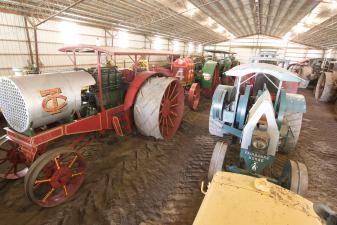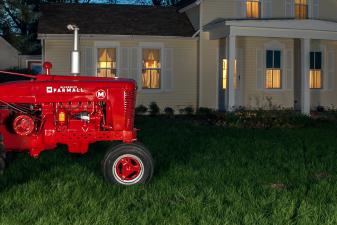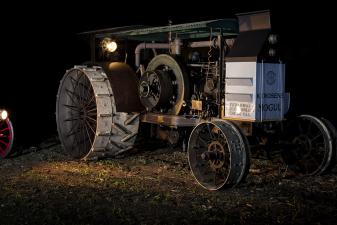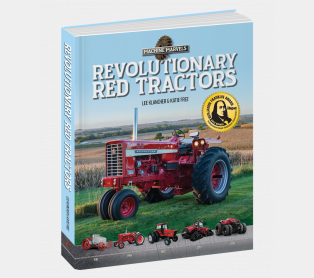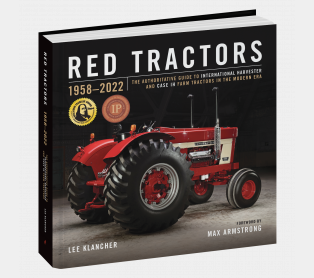1911 International Titan Type D

The following is the story behind the 1911 Titan Type D, which is the feature tractor for April in the Farmall Tractors Calendar 2023. Due to a printing error, the text was not included in the calendar. Please enjoy this expanded story with bonus images!
“Any sufficiently advanced technology is indistinguishable from magic.” —Arthur C. Clarke
Set the wayback machine to 1911. Imagine working your farm with horses, mules, and the simple equipment they can draw. Your day is filled with backbreaking labor, and opening big swathes of new ground or running threshers would require managing large teams of animals and complex hitches and harnesses.
Then up the road comes this fantastic mechanical beast, with exposed engine components clicking precisely and fire spitting out the exhaust stack. The appearance of these first tractors was like a spaceship landing in your field today—a modern apparition capable of things beyond your wildest imagination.
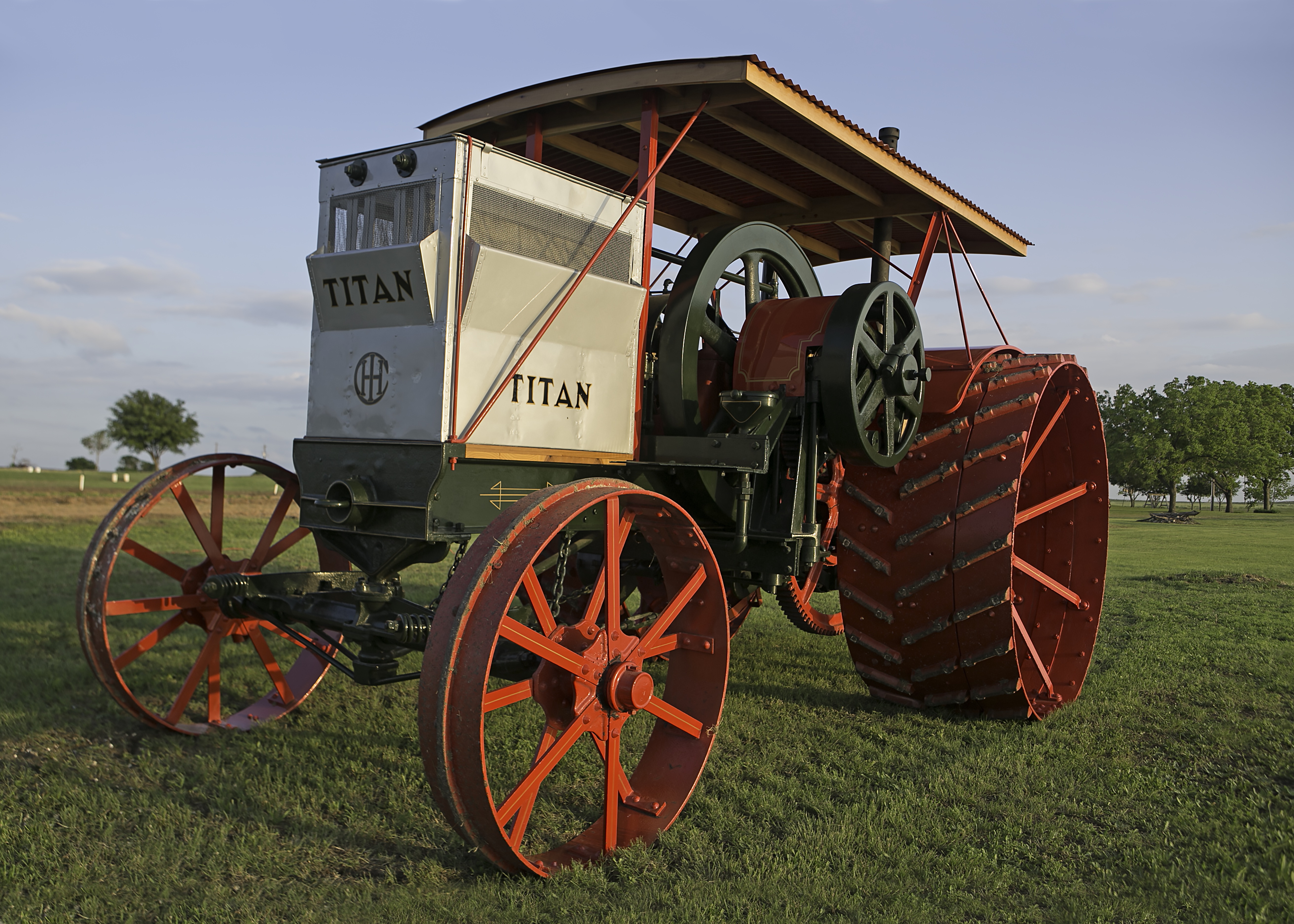
This was the state of the farm world when the Titan Type D appeared on the scene. Only a few of the machines were built and sold, as they were the highest level of farm technology available—and expensive for the time. They were typically purchased by owners of very large farms—often collectives backed by investment money from around the world—or independent contractors who traveled farm to farm renting the machine’s time.
Because only a few were sold and even fewer survived, the earliest International Harvester Company tractors are in short supply today, and this Type D 25-hp is one of about two dozen such machines known to exist.
The machine weighs about eight tons and is powered by a 25-horsepower single-cylinder engine that fires only once every twenty revolutions. The tractor has a gear forward and gear reverse drive, and top speed is in the three mile per hour range.
This machine came from a collector in Washington State, who restored it in the early 1980s and then left it outside. Wearing rust and bad paint, the tractor passed through the hands of two other collectors before landing in the stable of Louis Buice, who had it restored by Wendell Kelch. Kelch tore it down completely and rebuilt it from top to bottom. The tractor is probably the cleanest Type D in existence, and it is also a surprisingly quiet, easy to manage machine.
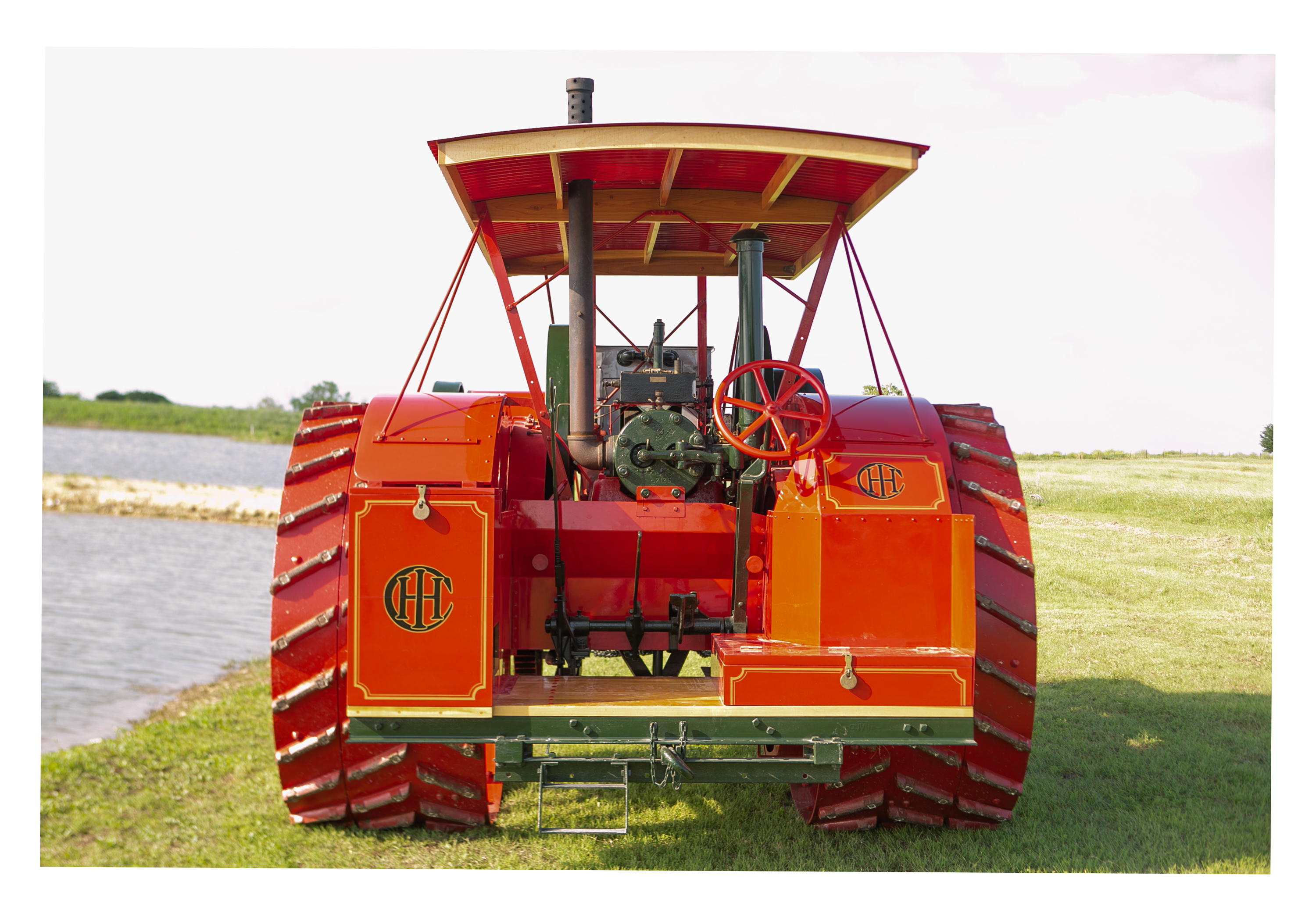
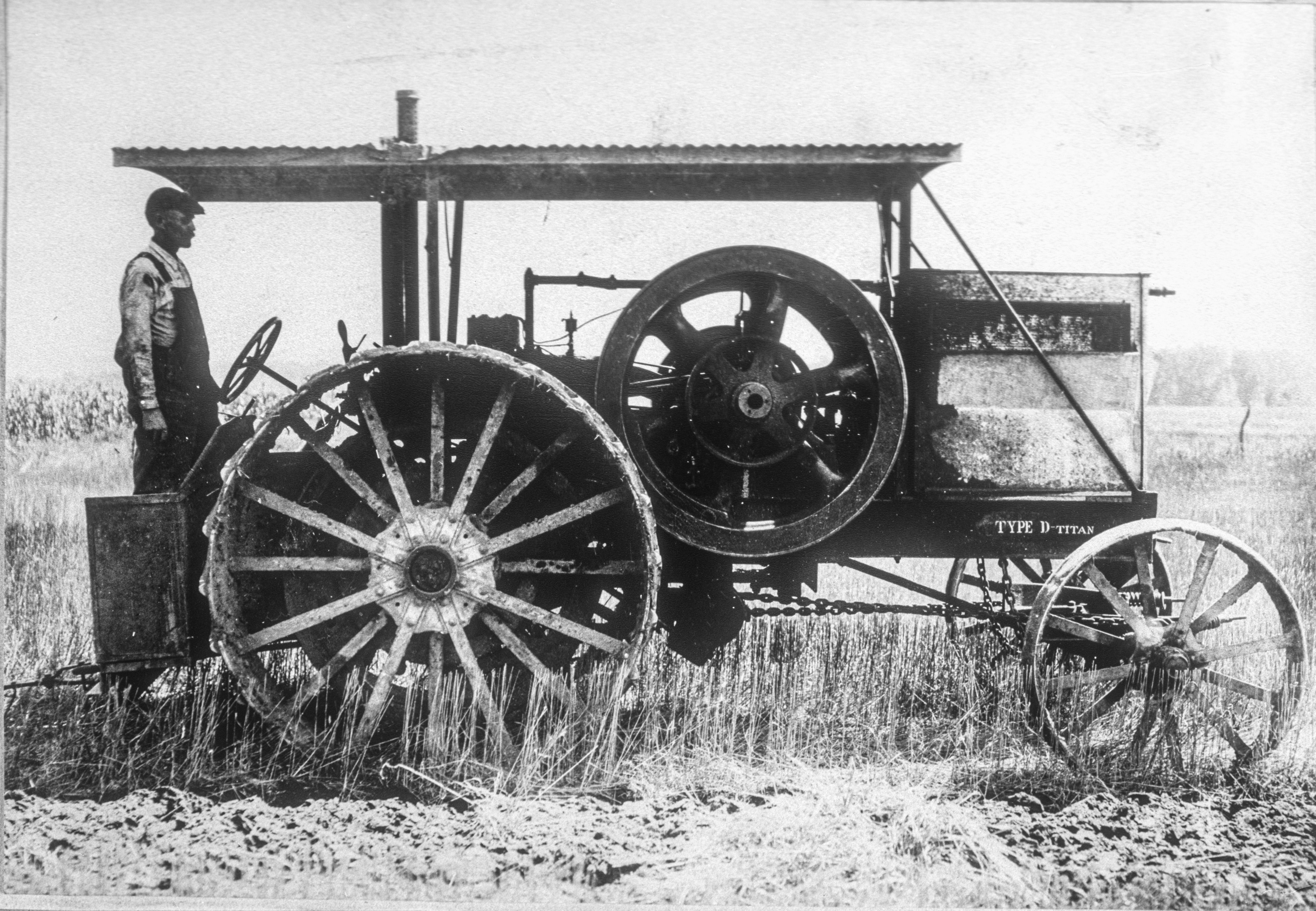
Evolution of the Titan Type D
The Type D Titans were introduced as a new line of International tractors. They included 20- and 25-horsepower models that were redesigns of the earlier machines as well as a brand-new Titan 45-horsepower model. The 45-horsepower model was one of the first International tractors to use an engine designed specifically for a tractor.
The smaller machines were heavy-duty units, despite their low horsepower ratings. They weighed in at about 14,000 pounds and differed from the Type Cs in their use of a live axle and larger 70-inch rear drive wheels. The tractors were sold as “Reliance” tractors for a time, later becoming known as Titans.
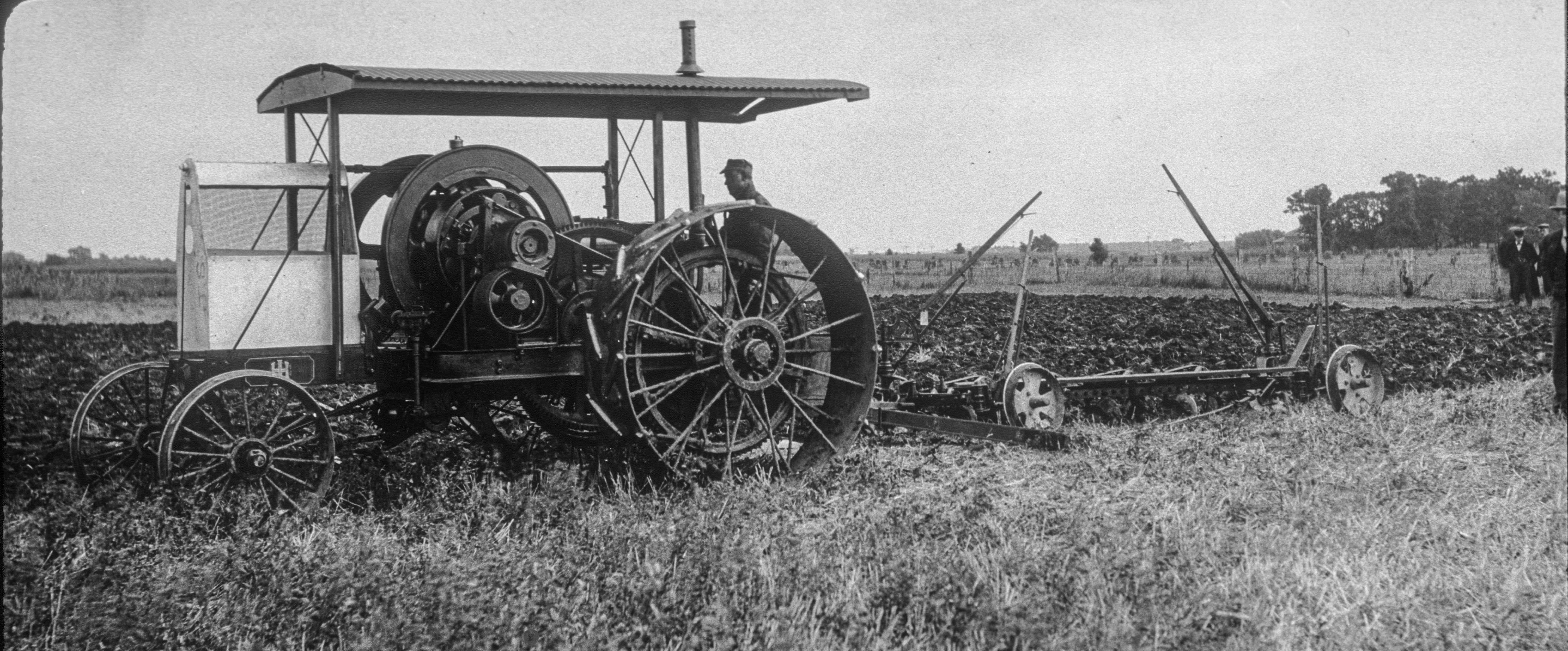
Official production for the new 45 was authorized in May 1910, and the tractor was to be built as the 45-horsepower Reliance. It used a heavy channel frame and was to be outfitted with the same basic design as the smaller Type D (Reliance) tractors. The tractor was to be manufactured at Milwaukee Works in Milwaukee, Wisconsin.
The Type D 45-horsepower design was based on the smaller machine’s chassis, with an all-new two-cylinder engine with two gear-driven forward speeds and a friction reverse. The tractor was significantly larger than previous Internationals, weighing in at 18,500 pounds and standing about 16 feet long and 9 feet wide. The tractor was a radical design for its time. It used removable cylinder sleeves, crankcase compression, automobile steering, and a rear differential.
The tractor’s biggest problem was reportedly hard starting. The big twins had a 9x12-inch bore and stroke and ran at 320 rpm. To get the charge fired in the huge combustion chambers, the engine needed a strong spark. Early engines didn’t provide a good spark until the engine was turning at a respectable clip, which was difficult to do with just a crank. Impulse couplings on the magneto provided a partial solution. An impulse coupling built up tension in a spring that released suddenly, snapping the magneto over at a pace brisk enough to supply a fat spark. Not all Titans even had magneto ignition, and all were still difficult to get fired up.
International provided a solution to this problem by equipping the Titan 45 with an air starter. The change took place in 1912 and could not be retrofitted to older machines as it required a host of new parts, including a new set of frame channels and a new front bolster. The number of new parts involved is evidence of how big a problem it was to start early 45s. The air starter used an on-board compressor to store air in a tank. The tank was piped to the right-hand cylinder head and could be released to turn over the engine.
In 1912, a new version of the 45 was introduced, equipped with an improved engine. This machine was quite similar to the old 45, with a different crankshaft and flywheel and a throttling governor.
The next big change came in 1914, when a new fuel mixer which increased power output was added. The original rating was 27 drawbar and 45 belt horsepower, although it is more typical to see the original model listed as the Titan 45 rather than the 27-45. The new model brought the ratings up to 30-60, respectively, and the Titan 30-60 was born.
Late in 1914, the 30-60 was redesigned. A fan and radiator cooling system replaced the tank cooling, and a starting engine from the Mogul replaced the compressed-air starting system. A cab was added, some of the controls were moved, and the new machine was fitted with truss rods to reduce vibration. The tractor was released for production early in 1915.
For more stories like this one, check out the Farmall Tractors Calendar 2023 and the related books linked below.


